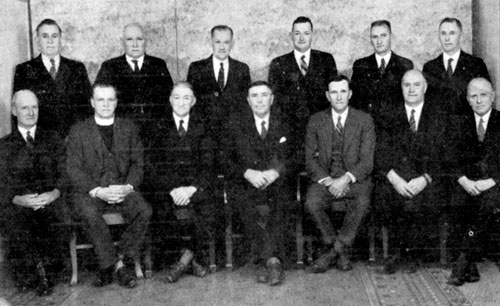Main Page
From The Orange Wiki
| Line 4: | Line 4: | ||
| - | + | On Sunday 26 May 2013 a service was held at the Boer War memorial in Robertson Park to remember the soldiers, their horses, nurses and members of the navy who were involved in the Second Boer War (1899-1902). The war ended with the signing of the Treaty of Vereeniging on 31 May 1902. Over the past few years this event has been commemorated in Orange on the nearest Sunday. | |
| - | + | Men from Orange first served in combat in South Africa during the Second Boer War. Four young men of the district played the ultimate sacrifice: Major SJ Smith, and troopers EJ Coneybear, HJ Beasley and M Bastick losing their lives in the conflict. | |
| - | + | Dr Neville Howse arrived in Orange from England via Taree in September 1899 with plans to establish a medical practice. These were put on hold when his commission in the NSW Army Medical Corps found him bound for South Africa early in 1900. On 24 July at Vredefort in the Orange Free State, Captain Howse was assigned to a British unit pursing a group of Boer guerillas. In the midst of a counter attack by the enemy Howse risked his own life to rescue a wounded man pinned down by heavy crossfire. For his bravery Howse became the first member of an Australian force to be awarded the Victoria Cross. Apart from the Boer War he also served at Gallipoli in World War I and Sir Neville Howse was responsible for the development of trauma treatment following the war. | |
| - | + | He returned to pursue his medical career in Orange and be heavily involved in the community. He later went on to become involved in federal politics. | |
| - | + | The Boer War Memorial was erected at the intersection of Summer and Anson Streets in 1905. The list of 125 who died in World War I was later added to the memorial. In the late 1920s it was re-erected on the northwest corner of the intersection of Summer Street and Lords Place, outside Robertson Park. It was relocated to its current position at the northern end of Robertson Park as part of the remodeling of the park in the late 1930s. | |
| - | + | ||
| - | + | Orange also has another interesting link to the Boer War as Banjo Paterson was a war correspondent in that war. | |
| - | In | + | |
| - | + | ||
| - | + | ||
| - | + | ||
| - | + | ||
| - | + | ||
| - | + | ||
| - | + | ||
| - | + | ||
| - | + | ||
Revision as of 06:43, 31 May 2013
On Sunday 26 May 2013 a service was held at the Boer War memorial in Robertson Park to remember the soldiers, their horses, nurses and members of the navy who were involved in the Second Boer War (1899-1902). The war ended with the signing of the Treaty of Vereeniging on 31 May 1902. Over the past few years this event has been commemorated in Orange on the nearest Sunday.
Men from Orange first served in combat in South Africa during the Second Boer War. Four young men of the district played the ultimate sacrifice: Major SJ Smith, and troopers EJ Coneybear, HJ Beasley and M Bastick losing their lives in the conflict.
Dr Neville Howse arrived in Orange from England via Taree in September 1899 with plans to establish a medical practice. These were put on hold when his commission in the NSW Army Medical Corps found him bound for South Africa early in 1900. On 24 July at Vredefort in the Orange Free State, Captain Howse was assigned to a British unit pursing a group of Boer guerillas. In the midst of a counter attack by the enemy Howse risked his own life to rescue a wounded man pinned down by heavy crossfire. For his bravery Howse became the first member of an Australian force to be awarded the Victoria Cross. Apart from the Boer War he also served at Gallipoli in World War I and Sir Neville Howse was responsible for the development of trauma treatment following the war.
He returned to pursue his medical career in Orange and be heavily involved in the community. He later went on to become involved in federal politics.
The Boer War Memorial was erected at the intersection of Summer and Anson Streets in 1905. The list of 125 who died in World War I was later added to the memorial. In the late 1920s it was re-erected on the northwest corner of the intersection of Summer Street and Lords Place, outside Robertson Park. It was relocated to its current position at the northern end of Robertson Park as part of the remodeling of the park in the late 1930s.
Orange also has another interesting link to the Boer War as Banjo Paterson was a war correspondent in that war.

